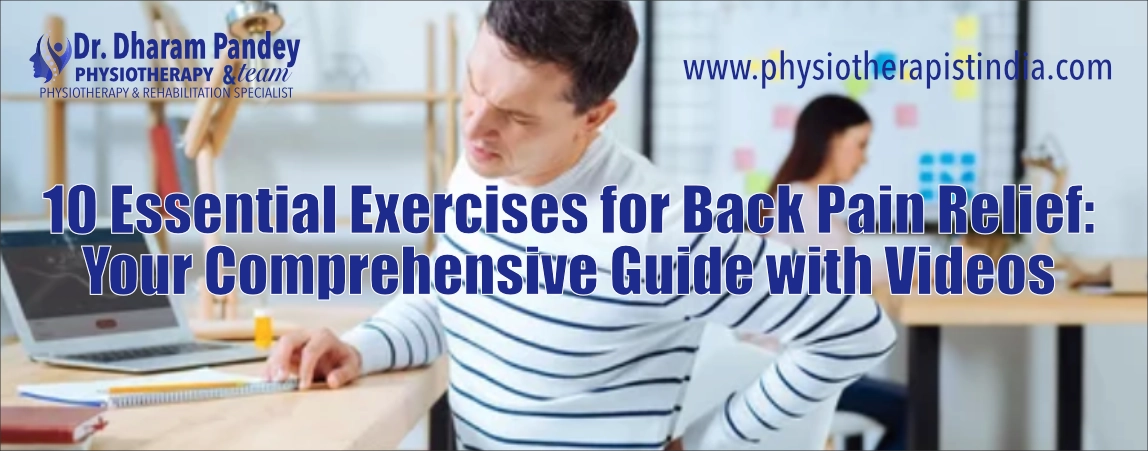WHAT WE TREAT
Spondylitis, Spondylosis, And Spondylolisthesis
Best Physiotherapist in Delhi
Discover the differences between spondylitis, spondylosis, and spondylolisthesis. Learn about their causes, symptoms, treatments, and how to maintain spinal health. Get answers to common questions about these spinal conditions.
Spondylitis, Spondylosis, And Spondylolisthesis
The spine is a remarkable and complex structure that provides stability, flexibility, and protection to the spinal cord. However, it is also susceptible to various conditions that can impact its health and function. Spondylitis, spondylosis, and spondylolisthesis are terms often associated with spinal issues, but they represent distinct conditions. In this comprehensive guide, we’ll explore the differences between these three spinal disorders, their causes, symptoms, treatments, and how to maintain spinal health.
Understanding the Basics
What is the Spine?
The spine, also known as the vertebral column or backbone, is the central support structure of the body. It consists of a series of vertebrae stacked on top of one another, and between them are intervertebral discs. These discs act as cushions, absorbing shock and allowing flexibility.

Spondylitis – Inflammation of the Spine
What is Spondylitis?
Spondylitis refers to the inflammation of one or more vertebrae in the spine. It is often associated with autoimmune conditions and can result in pain, stiffness, and reduced mobility. The most common type of spondylitis is ankylosing spondylitis.
Causes of Spondylitis: Explore the underlying causes of spondylitis, including the role of genetics and the immune system in its development.
Symptoms of Spondylitis: Learn about the typical symptoms of spondylitis, which often include back pain, morning stiffness, and fatigue.
Diagnosis and Treatment: Discover how spondylitis is diagnosed and the various treatment options available, from medications to physical therapy.
Spondylosis – Degenerative Changes in the Spine
What is Spondylosis?
Spondylosis, also known as spinal osteoarthritis, is a condition characterized by degenerative changes in the spine. It often occurs with aging and can lead to issues such as bone spurs and reduced disc height.
Causes of Spondylosis: Explore the primary causes of spondylosis, including age-related wear and tear on the spine.
Symptoms of Spondylosis: Learn about the common symptoms of spondylosis, including neck or lower back pain and muscle weakness.
Diagnosis and Treatment: Understand how spondylosis is diagnosed and the treatment options available, including lifestyle changes and surgical interventions.
Spondylolisthesis – Slipped Vertebrae
What is Spondylolisthesis?
Spondylolisthesis is a condition where one vertebra slips forward over the one below it. This can cause spinal instability and compression of the nerves.
Causes of Spondylolisthesis: Explore the various causes of spondylolisthesis, which can include congenital factors, degenerative changes, or traumatic injury.
Symptoms of Spondylolisthesis: Learn about the symptoms of spondylolisthesis, such as lower back pain, sciatica, and muscle tightness.
Diagnosis and Treatment: Discover how spondylolisthesis is diagnosed, from physical exams to imaging tests, and explore the range of treatments available, including bracing and surgical options.
Maintaining Spinal Health
Preventing Spinal Disorders: Get tips on maintaining good spinal health, including proper posture, regular exercise, and ergonomic considerations.
Exercises for Spinal Health: Learn about exercises and stretches that can help keep your spine strong and flexible.


Cutting-Edge Technology
Our commitment to using the best technology extends to various aspects of physiotherapy:
- Robotic Assistance: We employ robotics for gait training, aiding patients with mobility impairments. These devices facilitate improved motor control and muscle activation.
- Electrotherapy: Techniques like TENS, IFT, and Ultrasound Therapy are used to target pain relief and accelerate tissue healing.
- Virtual Reality (VR): We utilize VR and interactive gaming for engaging and enjoyable rehabilitation, increasing patient motivation and compliance with treatment.
Frequently Asked Questions
Reach out to us if you have further Questions - We're here to help!
Frequently Asked Questions (FAQs) – Spondylitis, Spondylosis, and Spondylolisthesis
Q1: What is the difference between spondylitis, spondylosis, and spondylolisthesis?
- Spondylitis refers to inflammation of the vertebrae, often caused by autoimmune conditions.
- Spondylosis is a degenerative condition characterized by wear and tear on the spine due to aging.
- Spondylolisthesis involves one vertebra slipping forward over another, leading to spinal instability.
Q2: Are these conditions preventable?
- While you can’t completely prevent them, maintaining good spinal health through proper posture, exercise, and a healthy lifestyle can reduce your risk.
Q3: What are the common symptoms of these conditions?
- Spondylitis may cause back pain, stiffness, and fatigue.
- Spondylosis can lead to neck or lower back pain, muscle weakness, and reduced disc height.
- Spondylolisthesis symptoms include lower back pain, sciatica, and muscle tightness.
Q4: How are these conditions diagnosed?
- Diagnosis involves physical exams, medical history, and imaging tests like X-rays, MRIs, or CT scans.
Q5: What are the treatment options for these conditions?
- Treatment varies but may include medications, physical therapy, lifestyle changes, bracing, and, in some cases, surgery.
Q6: Can genetics play a role in these conditions?
- Yes, genetics can contribute to the development of spondylitis, spondylosis, and spondylolisthesis, but they often involve other factors as well.
Q7: Can I live a normal life with these conditions?
- With proper management and healthcare, many individuals can lead fulfilling and active lives despite these spinal conditions.
Q8: What advancements have been made in the treatment of these conditions?
- Advancements in treatment options, including medications, minimally invasive surgeries, and physical therapy techniques, have improved the management of these conditions.
Q9: How common are these spinal disorders, and who do they typically affect?
- The prevalence of these conditions varies, but they can affect people of all ages, with spondylitis often diagnosed in young adults and spondylosis and spondylolisthesis more common in older adults.
Q10: Are there specific exercises or stretches that can help with these spinal conditions?
- Yes, there are exercises and stretches that can help maintain spinal health and alleviate some symptoms. A physiotherapist or healthcare provider can recommend appropriate exercises based on the specific condition.
Q11: Can pregnancy or childbirth affect these spinal conditions?
- Pregnancy and childbirth can impact spinal health, and pre-existing spinal conditions may require careful management during this period. Consult with a healthcare provider for guidance.
Q12: Are there support groups or communities for individuals with these conditions?
- Yes, many support groups and online communities are available for individuals living with these conditions. These communities offer valuable information, emotional support, and shared experiences.
Spondylitis, spondylosis, and spondylolisthesis are distinct spinal conditions with varying causes, symptoms, and treatments. It is essential to understand these differences and work with healthcare professionals to address and manage these disorders effectively. By maintaining good spinal health and staying informed, individuals can take proactive steps to prevent and alleviate the impact of these spinal conditions on their daily lives.
Have Questions or Need Assistance?
Don’t hesitate to reach out to us:
Book Appointment with Experts
- Call/WhatsApp: +9818911195
- Book Appointment with Experts
We are here to lend our support on your journey toward improved movement and overall well-being.
See all Blogs & Articles
See all Conditions we Treat
Note: Content provided here is for informational purposes only and is not a substitute for professional medical advice or diagnosis. If you believe you are experiencing pain or any other health-related issue, it is important to seek the advice of qualified healthcare professionals for a proper evaluation and treatment plan.
See all How it Works.









